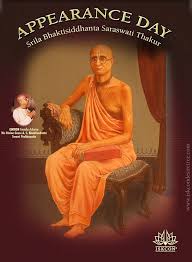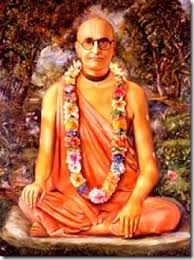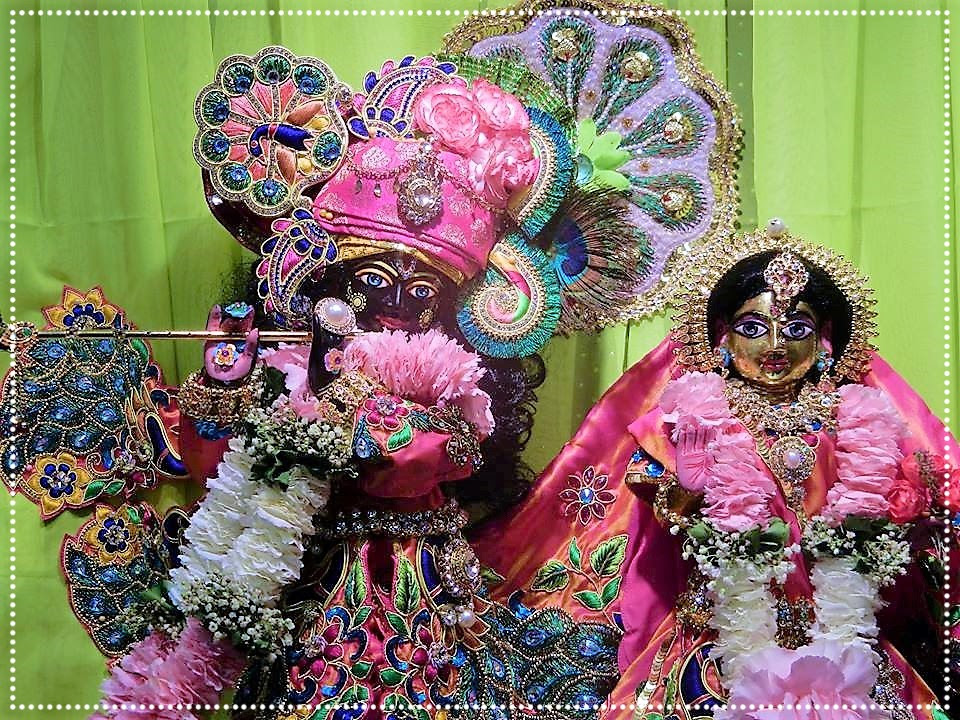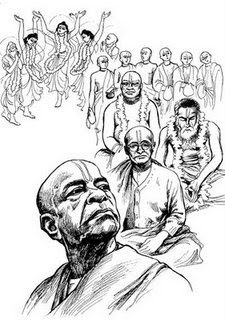Monday, February 18th, 2019
Sunday, February 17th, 2019
→ The Walking Monk
Saturday, February 16th, 2019
→ The Walking Monk
Friday, February 15th, 2019
→ The Walking Monk
Adding Unicode Support to the Bhaktivedanta VedaBase.
Now, text…
→ Dandavats

Adding Unicode Support to the Bhaktivedanta VedaBase.
Now, text you copy and paste text from the Bhaktivedanta VedaBase® can come out right — diacritics and all — for anyone you share it with. A simple, free plugin for the desktop VedaBase program makes your text come out in Unicode. That means you can paste your text in an email, on Facebook, or wherever and the diacritic marks will come out right: Kṛṣṇa, not Kåñëa.
The update comes in the form of a small file (a “plugin”) you can easily download and install. Simple instructions come with it.
The plugin gives you three ways to copy text:
Copy with Unicode
Copy as plain text (no diacritics)
Copy with diacritics the old way (no longer recommended)
For each of these three ways, you also have the option to include a reference.
You can download the file here: https://goo.gl/puQ8kB
Life of the devotee – Baladeva Das (26 min. video)
→ Dandavats

Life of the devotee - Baladeva Das (26 min. video)
Srila Prabhupada: It is essential that one constantly associate with pure d...
Radha Kunda Parikrama (23 Feb, 2019) (Album of photos)
→ Dandavats

Radha Kunda Parikrama (23 Feb, 2019) (Album of photos)
Deena Bandhu Das: By the mercy of Srimati Radharani, we entered Her Holy Dhama of Radha Kunda, the most sacred place of the universe. Not only did we offer our prayers and obeisances at Sri Radha Kunda and Sri Shyama Kunda, but we visited many sacred places around the banks, such as Sri Raghunatha Das Goswami’s Samadhi, Bhajan Kutir and Sri Krishna Das Kaviraja Goswami’s Bhajan Kutir where Sri Caitanya-Caritamrita was written. We were delighted to find renovation in full swing at Raghunatha’s Bhajan Kutir.
Saturday procession at Mayapur Chandrodaya Mandir (Album of photos and videos)
→ Dandavats

Saturday procession at Mayapur Chandrodaya Mandir and the Temple of the Temple of Vedic Planetarium (Album of photos and videos)
May he kindly correct me / “Пусть он милостиво меня поправит”
→ Traveling Monk
I very much appreciated this post today by Giriraj Swami!
“Today is the appearance day of Srila Prabhupada’s spiritual master, Srila Bhaktisiddhanta Sarasvati Thakura. He was very kind, but also very strict. He said of himself, ‘I am not only a proofreader of the press; I am a proofreader of men—-I see their faults and try to correct them. I am also a proofreader of religion. I have appeared in the zodiac sign of the crab, so whenever I see anything undevotional, I act like a crab. If I see any so-called devotion, not actually in the true unalloyed spirit, I shall pierce it!’
May he kindly correct me as he sees fit.
Hare Krishna.
Yours in service,
Giriraj Swami”

https://www.facebook.com/photo.php?fbid=10213757482314244&set=a.3707173840886&type=3&theater
Srila Bhaktisiddhanta Sarasvati Thakura on Pure Chanting
Giriraj Swami
 “We will not be able to chant purely as long as we are absorbed in material thoughts. How can we chant Krishna’s name if we are not inclined to serve Him? A person interested in sense gratification, who is fond of cheating and who is a hypocrite, can never chant the holy name. Those who do not understand that the Lord’s holy name and the Lord Himself are nondifferent will face obstacles in chanting. Chanting begins when we are inclined to serve the Lord. Unless we are convinced that the holy name is directly the Lord Himself, how will we chant? The Lord’s sacred name does not manifest on the tongue if the heart is filled with the current of mundane thought. Therefore, it is not possible to chant the holy name until the mind is spiritualized. Only a person whose material conception has been destroyed is able to chant Hari’s name constantly.
“We will not be able to chant purely as long as we are absorbed in material thoughts. How can we chant Krishna’s name if we are not inclined to serve Him? A person interested in sense gratification, who is fond of cheating and who is a hypocrite, can never chant the holy name. Those who do not understand that the Lord’s holy name and the Lord Himself are nondifferent will face obstacles in chanting. Chanting begins when we are inclined to serve the Lord. Unless we are convinced that the holy name is directly the Lord Himself, how will we chant? The Lord’s sacred name does not manifest on the tongue if the heart is filled with the current of mundane thought. Therefore, it is not possible to chant the holy name until the mind is spiritualized. Only a person whose material conception has been destroyed is able to chant Hari’s name constantly.
“We are suffering because we serve our material desires. If our material desires are strong we will become Maya’s servants and may even take birth as ghosts or evil spirits. When by serving guru and Krishna the heart becomes purified, the Lord’s pure name will appear in the heart. Otherwise, we will continue to commit offenses against the holy name.”
Hare Krishna.
Yours in service,
Giriraj Swami
Glories of Vedic Culture and Krishna Consciousness Movement…
→ Dandavats

Glories of Vedic Culture and Krishna Consciousness Movement (video)
Srimad Bhagavatam Class 11.17.22 by Navayogendra Swami Mah...
Preaching program in Istanbul, Turkey (Album of photos)
70…
→ Dandavats

Preaching program in Istanbul, Turkey (Album of photos)
70 guests attended the Nityananda Trayodasi festival.
Srila Prabhupada: In the Adi Purana Krishna tells Arjuna: “Anyone who is engaged in chanting My transcendental name must be considered to be always associating with Me. And I may tell you frankly that for such a devotee I become easily purchased.” (Nectar of Devotion, 12)
Find them here: https://goo.gl/jo4xah
50 Years of Hare Krishna’s in the UK: Feature article in the latest edition of Back to Godhead (BTG) magazine
→ Dandavats

50 Years of Hare Krishna’s in the UK: Feature article in the latest edition of Back to Godhead (BTG) magazine
The Gita’s transformational power explained through four special words in its last verse
→ The Spiritual Scientist
[Talk on Bhagavad-Gita 18.78 at Melbourne, Australia]
Podcast
Podcast Summary
Video:
The post The Gita’s transformational power explained through four special words in its last verse appeared first on The Spiritual Scientist.
Understanding what is contextual and what central in scripture
→ The Spiritual Scientist
[Bhagavatam class at ISKCON, Melbourne, Australia]
Podcast
Podcast Summary
Video:
The post Understanding what is contextual and what central in scripture appeared first on The Spiritual Scientist.
Bhaktisiddhanta Saraswati Thakura’s three quotes on preaching – Purpose, perspective, process
→ The Spiritual Scientist
[Bhagavatam class on Bhaktisiddhanta Saraswati Thakura appearance day at Melbourne, Australia ]
Podcast
Podcast Summary
Video:
The post Bhaktisiddhanta Saraswati Thakura’s three quotes on preaching – Purpose, perspective, process appeared first on The Spiritual Scientist.
Sri Vyaspuja Mahotsav of Srila Bhakti Siddhanta Saraswati Thakur Prabhupad at Sridham Mayapur.
→ Dandavats
 The Sri Saraswat Gaudiya Vaishnav Sangha that includes all the important Gaudiya Mutts of Nabadwip, Swarupgunj , Mayapur along with International Society for Krishna Consciousness ( ISKCON) celebrated the 146th divine appearance day of Srila Bhakti Siddhanta Saraswati Thakur Prabhupad at Mayapur on 24th Feb as Sri Vyas Puja Mahotsav. The Sangha consists of senior members from all the temples.
The Sri Saraswat Gaudiya Vaishnav Sangha that includes all the important Gaudiya Mutts of Nabadwip, Swarupgunj , Mayapur along with International Society for Krishna Consciousness ( ISKCON) celebrated the 146th divine appearance day of Srila Bhakti Siddhanta Saraswati Thakur Prabhupad at Mayapur on 24th Feb as Sri Vyas Puja Mahotsav. The Sangha consists of senior members from all the temples. Srila Bhaktisiddhanta Sarasvati Thakur Appearance
→ Ramai Swami


Srila Bhaktisiddhanta Sarasvati Thakura appeared at Jagannatha Puri on 6 February 1874 as the son of Srila Sacidananda Bhaktivinoda Thakura. In his childhood he quickly mastered the Vedas, memorised the Bhagavad-Gita, and relished his father’s philosophical works. He became known as “The Living Encyclopaedia” for his vast knowledge.
He preached convincingly against casteism and philosophical deviations from Gaudiya Vaisnavism. He tried to unite the four Vaisnava sampradayas by publishing their teachings. Srila Sarasvati Thakura earned the title Nrsimha Guru for his fearless and powerful delivery of the Vaisnava siddhanta. Mayavadis would cross the street to avoid confronting the “lion guru.” Besides being a courageous preacher, he was ornamented with all divine qualities and full of ecstatic love of God. He established 64 Gaudiya Math temples in India and centres in Burma, England, Germany.
His three “Brhat-mrdangas” (printing presses) in Madras, Calcutta, Krishna-nagara used to pump out books, magazines, and newspapers to spread the message of Sri Gauranga Mahaprabhu.
When asked why he printed a daily spiritual newspaper entitled Nadia Prakash, Srila Sarasvati Thakura replied, “If an insignificant city can produce five daily newspapers, then why can’t we publish a newspaper every ‘Second about the eternal, ever-fresh transcendental activities of the Supreme Personality of Godhead in His unlimited spiritual planet, Goloka Vrndavana?”
Apart from his father’s writings, he published many authorised sastras: Bhagavad-Gita, Srimad Bhagavatam, Caitanya Bhagavata, Caitanya Mangala, Prema-bhakti-candrika, and his favourite book Sri Caitanya-Caritamrita. He predicted that foreigners would learn Bengali to relish the nectar left by Srila Krishna Dasa Kaviraja in the Caitanya-Caritamrita.
He introduced many innovations to expand preaching. All over India he staged free theistic exhibits and dioramas depicting the pastimes of Sri Krishna and Sri Caitanya Mahaprabhu. Employing the latest technology, he even had animated dolls. To commemorate the many holy place
In Radha-Govinda’s eternal pastimes in Goloka Vrndavana, Srila Sarasvati Thakura serves as Nayana-mani manjari. His puspa samadhis are at Radha-kunda and Radha Damodara


The VedaBase Unicode plugin
→ Jayadvaita Swami

can do it right
Now text you copy and paste text from the Bhaktivedanta VedaBase® can come out right — diacritics and all — for anyone you share it with. A simple, free plugin for the desktop VedaBase program makes your text come out in Unicode. That means you can paste your text in email, on Facebook, or wherever and the diacritic marks will come out right: Kṛṣṇa, not Kåñëa.
To find out more, to get the plugin, and to find out how to plug it in and use it, go to https://vedabaseunicode.wordpress.com.
The post The VedaBase Unicode plugin appeared first on Jayadvaita Swami.
Srila Bhaktisiddhanta Sarasvati Thakura
Giriraj Swami
 Today is the appearance day of Srila Prabhupada’s spiritual master, Srila Bhaktisiddhanta Sarasvati Thakura. He was very kind, but also very strict. He said of himself, “I am not only a proofreader of the press; I am a proofreader of men—I see their faults and try to correct them. I am also a proofreader of religion. I have appeared in the zodiac sign of the crab, so whenever I see anything undevotional, I act like a crab. If I see any so-called devotion, not actually in the true unalloyed spirit, I shall pierce it!”
Today is the appearance day of Srila Prabhupada’s spiritual master, Srila Bhaktisiddhanta Sarasvati Thakura. He was very kind, but also very strict. He said of himself, “I am not only a proofreader of the press; I am a proofreader of men—I see their faults and try to correct them. I am also a proofreader of religion. I have appeared in the zodiac sign of the crab, so whenever I see anything undevotional, I act like a crab. If I see any so-called devotion, not actually in the true unalloyed spirit, I shall pierce it!”
May he kindly correct me as he sees fit.
Hare Krishna.
Yours in service,
Giriraj Swami
One Path, Many Paths
→ ISKCON News
Illustrated Story: Krishna’s Headache
→ ISKCON News
Why Did Krishna Choose Arjuna as the Recipient of Bhagavad-gita?
→ ISKCON News
Elegant Jagannatha Ratha-yatra Graces Amravati
→ ISKCON News

On February 11th, a Ratha-yatra festival was held in Amravati, the second largest and most populous city in Maharashtra’s Vidarbha region in India. The roads were decorated with rangoli by the Pune devotees, flowers were showered on the chariot from a bridge above, and the ISKCON Girls’ Forum distributed books along the route.
Pastimes of Srila Bhaktisiddhanta Sarasvati Thakur (video)
→ Dandavats

It is an offense to the Holy Name to think of the spiritual master who spreads the glories of the Lord as an ordinary human being.
Read More...Nityananda Trayodashi 2019- Abhishek – ISKCON Kathwada
→ Dandavats
 Nityananda Trayodashi 2019 - Abhishek - ISKCON Kathwada
Nityananda Trayodashi 2019 - Abhishek - ISKCON Kathwada Jagannath Ratha Yatra Bogor
→ Dandavats
 By Hari Narayana Das
By Hari Narayana Das As one of the participants of the festival devotees prepared the chariot nicely. the preparation was held at parking area in front of stores area. Devotees from Bali came earlier and made flower garland and the chariot team reassembled the chariot. A bus full of devotees from Lampung also participated on the ratha yatra of Lord Jagannath. They also carried Lord Jaganntah, Lord Balaram, and Their beloved sister Subadra devi on long journey from Lamung to Bogor. Devotees from Lampung arrived in Bogor at 01.00 A.m. and directly headed to Sri Sri Radha Govinda temple. Continue reading "Jagannath Ratha Yatra Bogor
→ Dandavats"
This Is The Proof / Доказательство
→ Traveling Monk
Srila Prabhupada then changed the subject. “How do we know Krishna is God?” he asked us.
“Because Krishna says so in the Bhagavad-gita,” a devotee said.
“Anyone can say that,” Prabhupada countered.
I piped up, “You told us so, and you’re a representative of Krishna, a spiritual master . . .”
“Someone will say I am just an old man.”
Not knowing what else to say, we were silent.
After a few moments, Prabhupada said, “You know Krishna is God because you feel His presence when you chant, as well as when you serve. You feel the ecstasy—this is the proof.”
[ “By His Example” by Guru das. Chapter, ‘India’ ]

https://www.facebook.com/photo.php?fbid=10213753405732332&set=a.3707173840886&type=3&theater
The Perfection of Chanting Hare Krsna / Совершенство воспевания Харе Кришна
→ Traveling Monk
“The purification of one’s chanting hari-nama means as soon as you chant the holy name of Krsna you will see the form of Krsna, realize the qualities of Krsna, remember the pastimes of Krsna. That is pure chanting of Hare Krsna mantra. That is stated in the commentary of Srila Jiva Goswami: that a pure devotee who chants Hare Krsna mantra immediately realizes the nama, rupa, guna, lila – everything about Krsna, simply by chanting the names. You will feel the form of Krsna. You will remember all His qualities. ‘Oh, Krsna is so qualified – He is so magnanimous.’ Then you will remember His lila pastimes: ‘Oh, Krsna instructed Arjuna. Krsna played with His cowherd boys. Krsna had very nice talks with the gopis, with His mother, Yasoda.’ These things you will remember. That is the actual perfection of chanting.”
[ Srila Prabhupada quoted in ‘Srila Prabhupada Lilamrita’ Volume 4, Every Town and Village – Around the World. 1968 – 1971 ]

https://www.facebook.com/photo.php?fbid=10213752911799984&set=a.3707173840886&type=3&theater
Srila Bhaktisiddhanta Sarasvati Thakura’s commentary on the story of Ekalavya
→ Dandavats
 By Srila Bhaktisiddhanta Sarasvati Thakura
By Srila Bhaktisiddhanta Sarasvati Thakura In his book of essays, entitled Upakhyane Upadesa, "Instructions in Stories" (Gaudiya Mission 1936), Srila Bhaktisiddhanta Sarasvati Thakura gives the following commentary on the story of Ekalavya: The translation from the original Bengali is by H.H. Bhakti-caru Svami. To many people, Ekalavya's devotion to his guru is ideal, but there is a special consideration...What was Ekalavya's fault? That should be considered. Wearing the mask of guru-bhakti (devotion to the guru), Ekalavya actually revolted against his guru. Whether his guru was actually considering him to be disqualified by birth in a low-class family, or was simply testing him-- for whatever reason--when his gurudeva refused to teach him the art of Dhanur Veda, it was Ekalavya's duty to accept the instruction of his spiritual master. Continue reading "Srila Bhaktisiddhanta Sarasvati Thakura’s commentary on the story of Ekalavya
→ Dandavats"
Srila Bhaktisiddhanta Sarasvati’s South India Tour
→ Dandavats
 By Srila Sarasvati Thakura
By Srila Sarasvati Thakura He said that previously the upavita was not used, only the dhoti and upper cloth, but later it became acceptable for brahmanas to wear an upavita instead of an upper cloth. When the Bengali devotees expressed surprise that South Indian brahmanis wore their saris with a kaccha, Srila Sarasvati Thakura stated that this was the correct Vedic method. Continue reading "Srila Bhaktisiddhanta Sarasvati’s South India Tour
→ Dandavats"
Sparking Joy
→ ISKCON News

Unless we are on a total media fast, we have likely heard of the notion of tidying our home with the KonMari method of asking the question of our belongings - ‘does this spark joy for me?’. If not, we thank it for being in our life and bid it farewell. What’s powerful about this is the experience of personalism.
ISKCON Desire Tree Celebrates 17 Years of Serving the Vaishnavas
→ ISKCON News
ISKCON Ahmedabad Offers Tribute for the Martyred Soldiers of Jammu and Kashmir
→ ISKCON News
Radhadesh Mellows 2019 – Ananta Vrindavan
→ ISKCON News
MC YOGI – Clear the Path (Remix) – Official Music Video
→ ISKCON News
Sri Chaitanya Cultural World Heritage Centre Planned in Mayapur
→ ISKCON News

Renowned industrialists Sajjan Jindal Chairman of JSW group of companies, B. K. Goenka Chairman of Welspun group and Ashok Goel Chairman of Essel Group visited the ISKCON world headquartes in Mayapur, India, regarding the proposed plan of ISKCON to set up a Sri Chaitanya Cultural World Heritage Centre.
ISKCON Pune Devotees Care for Blind Children
→ ISKCON News
Paramahamster: Super Dhoti 1008
→ ISKCON News
Sun Love Feast – Feb 24th, 2019 – Vedic discourse by HG Radha Gopinath Prabhuji
→ ISKCON Brampton

| |||||





















 Adult Education At The Temple
Adult Education At The Temple


